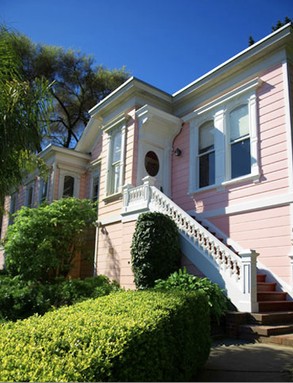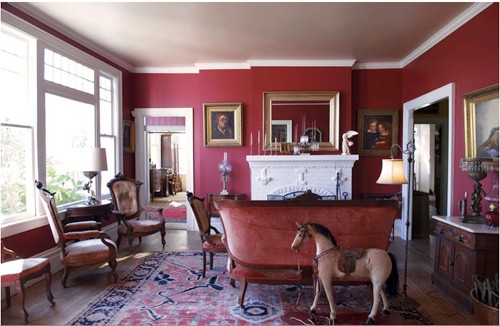Miller-Joost House
Introduction
Text-to-speech Audio
Images
A shot of Joost House from the front.

Inside one of the rooms of the house.

Backstory and Context
Text-to-speech Audio
The pink Victorian farmhouse known today as the Miller-Joost House was Joost's family residence. Before that, however, it was owned by Adam Miller, a milk rancher on Corbett Road. When Adam Miller's daughter Anna became Behrend Joost's wife, the house became the Miller-Joost residence. Now owned by Dr. Polly Clayborn-Mosby, the Miller-Joost House has historical landmark status and is the oldest house on Twin Peaks.
Joost was a successful San Francisco businessman and was responsible for constructing the first San Francisco electric street railway. He also founded a water company to distribute water from Twin Peaks to his neighborhood. He also invested in real estate and helped build neighborhoods of Noe Valley, Bay View, Clarendon Heights, and Sunnyside.
But Behrend Joost was not born into wealth. A farm boy from Germany, he and his four brothers came to San Francisco to find their fortune. At the age of 15, Behrend booked passage to America where two of his brothers already lived. Fabian was a goldminer in California when Behrend arrived in April Of 1857. Tonjes, the oldest brother, had a grocery store and Behrend became a salesman in his store. Within two years, he had saved $1000 and a few days before Christmas, 1859, Behrend opened his own grocery store at 11th Street and Mission, a busy toll road.
From here he expanded his business and opened up stores around the city. In 1887, Behrend decided to switch his retail merchandise from groceries to hardware. He became involved in the California Dredging Company during the early stages of building the Panama Canal. After over a year of work, Behrend pulled out with a profit of $850,000. He used that fortune to refocus his career in real estate and railroad building in San Francisco.
Sources
Silver, Mae. Father of Southwest San Francisco Behrend Joost (1845-1917). Found SF. Accessed May 21, 2017. http://www.foundsf.org/index.php?title=Father_of_Southwest_San_Francisco_Behrend_Joost_(1845-1917).
